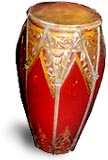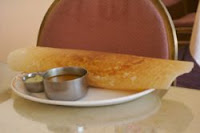Beautiful Malaysia
NikNorAzeelaJaafar D046780

Tuesday 15 November 2011
MUSIC AND DANCE IN MALAYSIA
Music and dance are almost inseparable in the Malaysian culture. Where there is one, the other is not far behind. True to Malaysia's heritage, dances vary widely and are, if not imports direct from the source nation, heavily influenced by one or more of Malaysia's cultural components.Much of Malaysian music and dance has evolved from more basic needs into the mesmerizing, complex art forms they are today.
source nation, heavily influenced by one or more of Malaysia's cultural components.Much of Malaysian music and dance has evolved from more basic needs into the mesmerizing, complex art forms they are today.
 source nation, heavily influenced by one or more of Malaysia's cultural components.Much of Malaysian music and dance has evolved from more basic needs into the mesmerizing, complex art forms they are today.
source nation, heavily influenced by one or more of Malaysia's cultural components.Much of Malaysian music and dance has evolved from more basic needs into the mesmerizing, complex art forms they are today. In an age before phone and fax, the rebana ubi, or giant drums, were used to communicate from hill to hill across vast distances. The Giant Drum Festival is held in Kelantan either in May or June.
The Joget, Malaysia's most popular traditional dance, is a lively dance with an upbeat tempo. Performed by couples who combine fast, graceful movements with rollicking good humor, the Joget has its origins in the Portuguese folk dance, which was introduced to Malacca during the era of the spice trade.
As regards the dances of Malaysia, there are many traditional dance forms which are still very much liked and performed in the country. Joget is a conventional dance form which is performed usually by couples, combining fast, graceful movements with good humor. Malaysia's most superb dance form is known to be the Candle Dance in which the candles are fixed on small plates and the dancer performs, holding plates in each hand. It becomes all the more fascinating to the onlooker with elegant body movements and curves.
Monday 14 November 2011
MALAYSIAN TRADITIONAL COSTUMES
Malaysia comprises three major cultures: Malay, Chinese and Indian, each culture has its own traditional and religious articles of clothing all of which are gender specific and may be adapted to local influences and conditions.
The richness and diversity of Malaysian traditional costumes can be seen throughout the length and breadth of Malaysia. There is a great variety of beautiful costumes which differ in style and design from state to state.
MALAY
The man is dressed in a Baju Melayu Cekak Musang matched with hand woven songket sarong with floral design and a headgear know as songkok.
Malay women wear the baju kurung, a knee-length blouse worn over a long skirt. Usually a scarf of shawl is worn with this.
CHINESE
The Chinese women wear the cheongsam, which is especially popular around the time of the Chinese New Year and other formal gathering.
The man is wearing a Chinese satin samfoo intricately woven with Chinese motif matched with trousers.
Older well-respected women wear a samfoo, which looks like pyjamas with a separate loose fitting top fastened by toggles and ankle length, or above the ankle, pants.
Old chinese immigrants who married Malays and adopted some of their culture are known as the Baba Nyonya. They wear "kebaya", which are hard-made lace-word clothing, often with intricate embroidery.
INDIAN
Indians in Malaysia as with elsewhere in the world wear sarees, a cloth of 5-6 yards which is usually worn with a petticoat of a similar shade. It is wrapped around the body so that the embroidered end hangs over the shoulder, while the petticoat is worn above the bellybutton to support the saree, which can be made from a wide variety of materials.
The Punjabi Salwar kameez is popular with women from northern India, and is a long tunic worn over trousers with a matching shawl.
In formal occasions indian men wear the "kurta", a knee-length shirt usually made from cotton or linen.
OTHERS
Those descended from the Portuguese often wear Portuguese-style outfits. Men often wear jackets and trousers with waist sashes, while women wear broad front-layered skirts. The dominant colours are black and red.
The male Iban is dressed in Baju Burung or vest and sirat woven loin-cloth which is a warrior's outfit. They also wear accessories such as a belt, armlet and anklet made from silver and a headgear decorated with hornbill feathers.
The Iban maiden wears the ceremonial dress consisting of the bidang cloth, marek empang which is a chest adornment, the sugu tinggi headdress and other silver ornaments such as the coin belt and bangles.
The male Kadazan is wearing a ceremonial costume usually worn during the Sumazau dance. It comprises of a jacket and trousers with gold trimmings and a woven destar cloth headgear known as siga. The female is wearing a ceremonial Kadazan Papar costume made of embroidered colour and gold thread. It is worn with a headgear made of bamboo strips known as siung and silver coin belt. These clothes are usually made from black velvet or silk.
Sunday 13 November 2011
MALAYSIAN CUISINE
Malaysian cuisine reflects the multicultural aspects of Malaysia. Various ethnic groups in Malaysia have their own dishes, but many dishes in Malaysia are derived from multiple ethnic influences. Food preparation differs from place to place, although many of the foods used are alike.Spices, aromatic herbs and roots are all used in Malaysian cuisine.
Nasi Dagang
Ketupat
Lemang
Malay traditional food in Malaysia is naturally made by the Malay people. Some of the more well known heavy fares are: lemang (glutinous rice cooked in bamboo pole), ketupat (glutinous rice cooked in pandanus, coconut or banana leaves) and nasi dagang (3 part rice to 1 part glutinous rice steamed with ginger, onion and fenugreek).
Malaysian Chinese food is derived from mainland southern Chinese cuisine such as Fujian cuisine and Hakka cuisine but has been influenced by local ingredients and dishes from other cultures though it remains distinctly Chinese.
Assam Laksa
Acar
Ayam Pongteh
Nyonya food was developed by the Nyonya (Straits Chinese) and Peranakan (mixed Chinese/Malay ancestry) people of Malaysia and Singapore. It uses mainly Chinese ingredients but blends them with South-East Asian spices such as coconut milk, lemon grass, turmeric, screwpine leaves, chillies and sambal. It can be considered as a blend of Chinese and Malay cooking with some Thai influence .
Examples of Nyonya dishes include:
- Acar - various pickled meats and vegetables like acar keat lah (honey lime/calamansi), achar hu (fried fish), acar kiam hu (salt fish), acar timun (cucumber), acar awat (mixed vegetables).
- Asam Laksa - A bowl of thick white rice noodles served in a soup made of fish, tamarind, onion, basil, pineapple and cucumber in slices.
- Ayam pongteh, a chicken stew cooked with tauchu or salted soy beans and gula melaka. It is usually saltish-sweet and can be substituted as a soup dish in peranakan cuisine.
Malaysian Indian cuisine of the ethnic Indians in Malaysia is similar to its roots in India, especially South India although there are many notable foods with influences from North India too. Before the meal it is customary to wash hands as cutlery is often not used while eating, with the exception of a serving spoon for each respective dish. This cuisine consists of curries which uses a lot of spices, coconut milk, and curry leaves. Some of the most popular cuisine include banana leaf rice, fish head curry and thosai.
Sarawakians tend to have a distinct cuisine from their Peninsula counterparts. Some of them are part of the traditional cuisine of the natives, while some are influenced by either Chinese or Indian cuisine. Among the cuisine unique to Sarawak are:
- Laksa Sarawak, is a beehoon with aromatic shrimp based gravy topped with shredded chicken, shredded egg, bean sprouts, prawns and chilli paste.
- Sarawak Kolok Mee, is a slightly sweet noodle dish, and often a main component of it is char siew, compliments the dish.
- Manok Pansoh, is a traditional Iban cuisine. Chicken is briefly cooked in a bamboo until tender and complimented with lemongrass, ginger and tapioca leaves.
PEOPLE OF MALAYSIA
Do You Know That
Malaysia is a country with fascinating people and an enthralling range of attractions, its three major races, the Malays, Chinese and Indians, along with the ethnic traditions of the KadazanDusun, Iban and many more in East Malaysia make up the delightful multicultural fabric of Malaysia. The potpourri is enriched further with the influence of the British, Portuguese, Dutch and Thais.
There are about 28,250,500 (as of July 2010) people in Malaysia from diverse backgrounds/races. It can be said that in diversity there is unity because in Malaysia all the races, ethnic Malays and indigenous people (sons of the soil), as well as Chinese, Indians, Eurasians and many others work and live together.
There are about 28,250,500 (as of July 2010) people in Malaysia from diverse backgrounds/races. It can be said that in diversity there is unity because in Malaysia all the races, ethnic Malays and indigenous people (sons of the soil), as well as Chinese, Indians, Eurasians and many others work and live together.
Subscribe to:
Posts (Atom)


































